Getting Twisted - Jewelry Making Tools
Twisted wire can add style, dimension, and elegance, flash or fun to a wire jewelry design. Sometimes twisted wire is a major player, placed where it is to be seen and sometimes it is added in obscure places to add interest to a design such as within the sides of a framed cabochon. Having received a number of questions from those who are a bit confused as to how to twist wire, what to twist and when to use it, my hope is that this article enables you to have more fun using twisted wires in your jewelry designs.
Let's begin by looking at a variety of 'wire twisters', and how to use them.
These are called "wire-twisting pliers". They are basically a pair of large, heavier pliers with an attached pin vise that has a spring-loaded handle. After cutting the desired length of wire to be twisted, one end is tightly secured to a solid surface such as winding it around a nail on a bench or a wall, (or having another person hold the end firmly in a heavy pair of flat-nose pliers). The operation is to then insert the other end of the wire(s) through a hole at the back of the plier's jaws and then into the end of the pin vise. After locking the wires tightly into the pin vise, the round knob at the end of the pin vise is pulled out and let go, causing the spring mechanism within the pin vise unit to twist the wire(s). It can be continuously pulled and released until the wire is twisted to satisfaction, and would be best used for lengths of wire18-inches and longer. After the desired twist has been achieved, open the pin vise to release the wire and pull it out of the pliers, then unhook the wire from the nail or other secured end. Yes, these pliers can be used to twist either a single or most multiple wire combinations.
My personal opinion: yes these pliers work, however I feel that they are a bit archaic since one can get the same results using either a hand-held automatic screwdriver or drill that is easier to use, and costs about the same or less than these cumbersome pliers. Also, these wire-twisting pliers only allow you to twist in one direction.
My personal opinion: yes these pliers work, however I feel that they are a bit archaic since one can get the same results using either a hand-held automatic screwdriver or drill that is easier to use, and costs about the same or less than these cumbersome pliers. Also, these wire-twisting pliers only allow you to twist in one direction.

A cordless power screwdriver is a small, compact unit that can be used to twist either a single or most multiple wire combinations easily. It has a chuck end, (the opening used to insert a variety of bits), that will not close around any wire, and therefore a hex chuck needs to be inserted into the bit opening. (See description below) Procedure: place the end(s) of the length of wire(s) to be twisted into the chuck and spin the chuck tightly closed around the wire(s). Hold the opposite end of the wire firmly in a pair of flat-nose pliers and push the button in either the forward or the reverse direction and twist until the desired effect has been obtained. Open the chuck and release the wire. (Having the option of either forward or reverse is nice when planning wire designs as discussed later.) Most power screwdrivers include an A/C adaptor that can be used to charge the unit for use without electricity. The A/C adaptor is also a nice feature as when the charged power has run out, the unit can still be used while plugged into an electric source and charging. Yes, a power screwdriver can be used to twist really long lengths of wire, gauges 12 and smaller.

My personal opinion: As a power screwdriver will keep its charge for quite a while, this is a nice unit to take to shows and to travel with, (however please remember that although one is not allowed to take a power tool 'on a plane', it can be in your checked luggage). While working a show, I like the option of having a single tool that has multiple uses because sometimes I need a screwdriver or drill too! The only drawback to using a power screwdriver is the fact that with most styles, a separate chuck has to be inserted to hold the wire and when used you have to be careful not to pull both the wire and the chuck out of the unit. The answer is simple, try not to 'pull', just hold the wire taunt with the flat-nose pliers, and if it pulls out, just put the chuck back in and continue twisting. Or, if you think you will never use the power screwdriver for anything other than twisting wire, the hex chuck can be glued into it. (See picture below that shows how to 'hold' wire(s) when twisting)
This little gem is called a keyless hex chuck and is the unit inserted into the end of most power screwdrivers when they are used to twist wire(s

Another unit used to twist very long lengths of either a single or about all multiple wire combinations is a power drill. Most power drills have a chuck end that will spin down tight enough to securely hold a single wire, however if yours does not, simply insert a just the end of a sliding pin vise or a hex chuck into the end and tighten the drill's chuck around it. (Inserting any pin vise in its entirety will limit being able to use the reverse mode of the drill as the ends of pin vises are threaded and will screw off! (See picture below.) Yes, both a corded and a cordless drill can be used to twist wire, a cordless being more convenient.
My personal opinion: One of my favorite tools! I absolutely love a cordless power drill for twisting long lengths of wire in many gauges, (I use up to 10g). Over the past years, I have used a variety of brands and burn one up about every two years or so, due to the amount of wire I use. The only drawback is that a power drill can be cumbersome to travel with, so I also own and regularly use four cordless power screwdrivers, when I teach and work shows.

These are two types of pin vises. The one on the top is a 'Swivel Head' and the one on the bottom is a Double Ended or better known as the 'standard' pin vise. Each is used in the same manner, twist one of the heads to open the inset jaws and then insert the end of a single piece of wire, (or two or three small gauged wires), into the center and twist the head tightly closed around the wire(s). Hold the opposite end(s) of the wire(s) firmly with flat-nose pliers and twist the pin vise with the other hand until the wire is twisted to the desired look. Then twist the head open to release the wire. With regards to wire jewelry creation, these units are most often used to twist shorter lengths of wire, from ¼-inch to 12-inches. Each of these two pin vise styles can be used to twist separate segments on the same wire, (as the swivel head is removable). This is done by either opening both ends, or by removing the end opposite that which is to hold the wire, and inserting a longer length of wire through the entire pin vise, so only a short length is protruding from the tightened end. Hold this end with flat -nose pliers and twist to desired effect, then open the tightened end and slide the untwisted wire through to the desired length, hold that segment where desired with flat-most pliers and twist the part that is between the flat-nose pliers and the tightened end of the pin vise. Repeat the procedure until the entire wire length has been twisted in whatever segments are planned. For example, a 12-inch wire could be twisted every other inch and then used in the planned design. Either pin vise will work to twist a single wire up to a 16g. When either pin vise is used to twist multiple wires, the best results happen when using no more than 2 wires at a time, in gauges 22 and smaller. Most often, either of these units is used to twist a single wire.
My personal opinion: The only benefit to owning either of these styles of pin vise is in having the option of twisting certain segments on a single wire. Each is small, compact and can be traveled with easily. As for twisting single wires when embellishing a design, it takes a bit of time to unscrew the head, inset a short segment of wire, screw the head tight around the wire, twist a few times and then unscrew the head to release the wire.


Pictured here is a thumb-operated or Sliding Pin Vise. It will perform all of the duties listed for the other two just described and works the same way. The main benefit of this marvelous device is that it takes a fraction of the time to set-up and use. Center and insert the end of a single, or up to two small wires, into the rounded end, use your thumb to push the knurled slide up the end, until it has tightly enclosed the wire(s) and twist. Use your thumb to push the slide down to release the wire(s). Please note that pin vises are most often used to twist a single, shorter wire.
My personal opinion: The Sliding Pin Vise is one of my favorite tools. When I am embellishing a piece of wire jewelry, I find this unit easy to use, fast and very convenient. The only drawback is that you can not use it to twist in a counterclockwise direction, without holding onto just the head, immediately below the knurled slide, as the head will twist off; making it inconvenient for those who prefer to twist using their left hand.
My personal opinion: The Sliding Pin Vise is one of my favorite tools. When I am embellishing a piece of wire jewelry, I find this unit easy to use, fast and very convenient. The only drawback is that you can not use it to twist in a counterclockwise direction, without holding onto just the head, immediately below the knurled slide, as the head will twist off; making it inconvenient for those who prefer to twist using their left hand.

Holding Wire While Twisting
Although a pair of chain-nose pliers can be used, I prefer to use flat-nose pliers to hold the opposite end of the wire I am twisting. The larger surface area inside the jaws of a flat-nose give more stability and you do not have to hold them in a 'death grip', thus preventing possible damage to your hand or wrist.
Place about 1/8-inch of the wire end into the jaws of flat-nose pliers, about mid-way down the jaw. Hold the pliers so they are vertical to the horizontal position of the wire, grip firmly and hold the wire so it is just tautly and twist away! (If you hear a 'clicking' noise coming from the flat-nose end, you are not holding the wire tightly enough and the wire is turning within the flats!)
Although a pair of chain-nose pliers can be used, I prefer to use flat-nose pliers to hold the opposite end of the wire I am twisting. The larger surface area inside the jaws of a flat-nose give more stability and you do not have to hold them in a 'death grip', thus preventing possible damage to your hand or wrist.
Place about 1/8-inch of the wire end into the jaws of flat-nose pliers, about mid-way down the jaw. Hold the pliers so they are vertical to the horizontal position of the wire, grip firmly and hold the wire so it is just tautly and twist away! (If you hear a 'clicking' noise coming from the flat-nose end, you are not holding the wire tightly enough and the wire is turning within the flats!)


Before you ask; Yes! It is normal for a wire to occasionally twist tighter at each end when compared to the twist in the center, especially when using a type of 'power' tool. Sometimes this happens because the person using the tool is not consistent with the pressure/speed at which they are operating the power tool and sometimes it's just the nature of the wire and how it was milled to being with.
You could take this in account when planning the wire's length and cut it about an inch longer, (as it will twist more tightly for about ½-inch at each end), and then cut those ends off. Rather than waste wire, I suggest that you don't stress over this little issue; you are creating a handmade item that is not supposed to look 'machine made'!
You could take this in account when planning the wire's length and cut it about an inch longer, (as it will twist more tightly for about ½-inch at each end), and then cut those ends off. Rather than waste wire, I suggest that you don't stress over this little issue; you are creating a handmade item that is not supposed to look 'machine made'!
What Wires??
I receive a lot of questions with regards to confusion about the sizes, shapes and tempers of wire to twist . . . . or not to twist. Let's talk about the shapes most commonly used in wire jewelry design.
Square:
• When an individual square wire is twisted, the resulting appearance is similar to a diamond cut chain, which is referred to as a 'bead'.
• Although two individually twisted square wires can then be twisted together, due to the difficulty in getting each individually twisted to the same 'bead', the result will more than likely be a looser twist as the two twisted wires will seem to repel each other.
Round:
• A single round wire cannot be twisted to get a 'party streamer' or coiled appearance!!
• Two or more round wires can be put into a wire twister and twisted together.
• Round wire can be twisted around a square wire.
Half-round:
• Half-round wire can be twisted around a square or a round wire.
• Half-round wire can be twisted individually
I receive a lot of questions with regards to confusion about the sizes, shapes and tempers of wire to twist . . . . or not to twist. Let's talk about the shapes most commonly used in wire jewelry design.
Square:
• When an individual square wire is twisted, the resulting appearance is similar to a diamond cut chain, which is referred to as a 'bead'.
• Although two individually twisted square wires can then be twisted together, due to the difficulty in getting each individually twisted to the same 'bead', the result will more than likely be a looser twist as the two twisted wires will seem to repel each other.
Round:
• A single round wire cannot be twisted to get a 'party streamer' or coiled appearance!!
• Two or more round wires can be put into a wire twister and twisted together.
• Round wire can be twisted around a square wire.
Half-round:
• Half-round wire can be twisted around a square or a round wire.
• Half-round wire can be twisted individually

Facts to Remember:
• Twisting any temper of wire will harden it! (Therefore I recommend that when 19 gauge or larger square wire is twisted before using, that you use dead soft.)
• The more tightly any wire is twisted, the thinner and weaker the wire becomes; therefore take care when working a tightly twisted wire using complicated techniques.
Examples:
If a tightly twisted wire is made into a rosette or spiral and that rosette is then folded over at a hard angle, the wire may break!
If a twisted wire is used as the top wire on a framed stone, when that wire is tightly pulled over the stone the wire may break!
I hope this answers a few of the many questions I've received about 'twisting wire'.
"Stay Twisted!!"
Dale/Cougar
DaleCgr@wire-sculpture.com
• Twisting any temper of wire will harden it! (Therefore I recommend that when 19 gauge or larger square wire is twisted before using, that you use dead soft.)
• The more tightly any wire is twisted, the thinner and weaker the wire becomes; therefore take care when working a tightly twisted wire using complicated techniques.
Examples:
If a tightly twisted wire is made into a rosette or spiral and that rosette is then folded over at a hard angle, the wire may break!
If a twisted wire is used as the top wire on a framed stone, when that wire is tightly pulled over the stone the wire may break!
I hope this answers a few of the many questions I've received about 'twisting wire'.
"Stay Twisted!!"
Dale/Cougar
DaleCgr@wire-sculpture.com
Materials

Wire
Tools

3 Prong Wire Twister Head
G5-2
- G5-2
- Lesson Quantity: 1.00 pieces
- Purchase Quantity: 1.00 each
- Price: $7.97
- Gold Club Price: $5.98

3.6 Volt Automatic Wire Twister (Cordless Screwdriver)
G5-15
- G5-15
- Lesson Quantity: 1.00 pieces
- Purchase Quantity: 1.00 each
- Price: $42.97
- Gold Club Price: $32.23

Double Ended Pin Vise
G5-4
- G5-4
- Lesson Quantity: 1.00 pieces
- Purchase Quantity: 1.00 each
- Price: $3.97
- Gold Club Price: $2.98

Pin Vise - 4 Piece Set
G5-7
- G5-7
- Lesson Quantity: 1.00 pieces
- Purchase Quantity: 1.00 each
- Price: $10.97
- Gold Club Price: $8.23

Sliding Pin Vise
G10-22
- G10-22
- Lesson Quantity: 1.00 pieces
- Purchase Quantity: 1.00 each
- Price: $5.95
- Gold Club Price: $4.46

Reversible Chuck Pin Vise
PIN-219.00
- PIN-219.00
- Lesson Quantity: 1.00 pieces
- Purchase Quantity: 1.00 each
- Price: $4.97
- Gold Club Price: $3.73

Swivel Head Pin Vise
G5-1
- G5-1
- Lesson Quantity: 1.00 pieces
- Purchase Quantity: 1.00 each
- Price: $2.97
- Gold Club Price: $2.23
- Category: General Education
- Technique(s): Wrapping








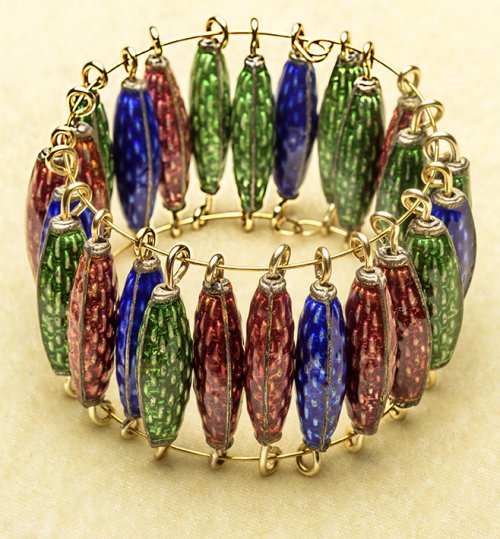
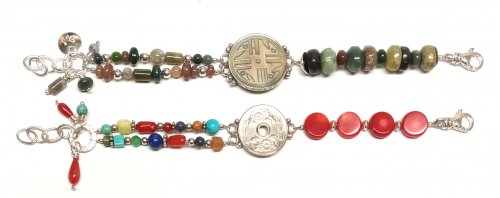
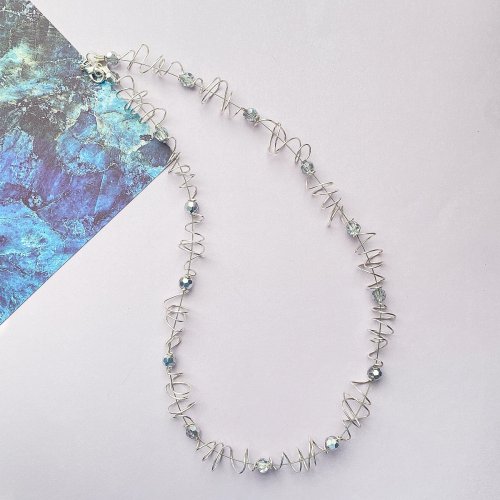


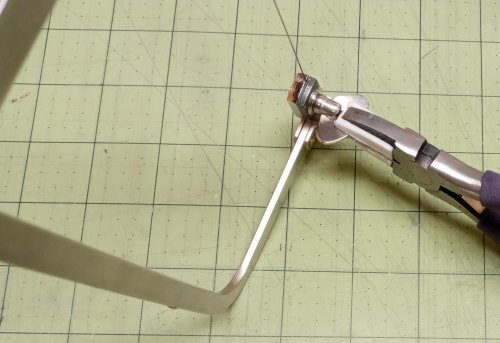

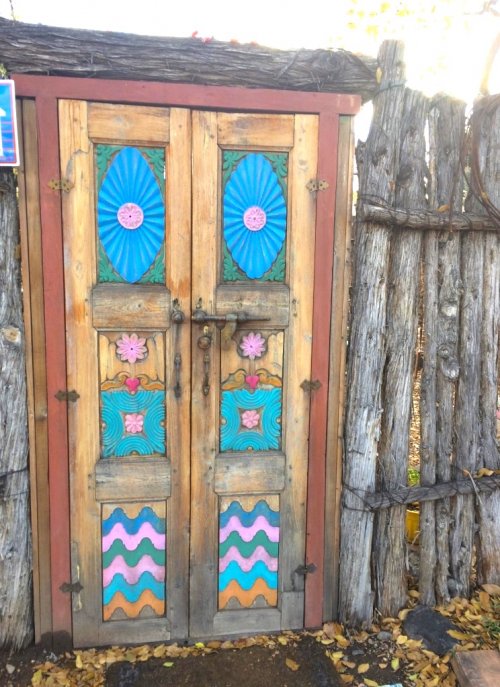



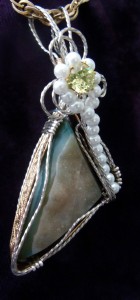

 How to Price Your Wire Jewelry
How to Price Your Wire Jewelry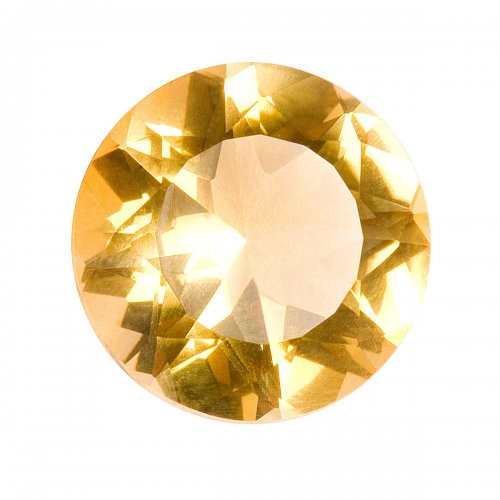 How to Measure Gemstones for Settings
How to Measure Gemstones for Settings Cool Anklets are HOT
Cool Anklets are HOT Inspiration Comes from Everywhere and Every Thing
Inspiration Comes from Everywhere and Every Thing Wire Jewelry Display and Booth Ideas
Wire Jewelry Display and Booth Ideas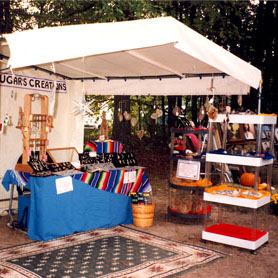 Where to Sell Your Wire Jewelry
Where to Sell Your Wire Jewelry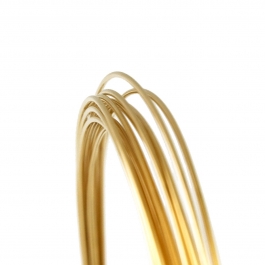 How to Choose Wire Temper for Making Jewelry
How to Choose Wire Temper for Making Jewelry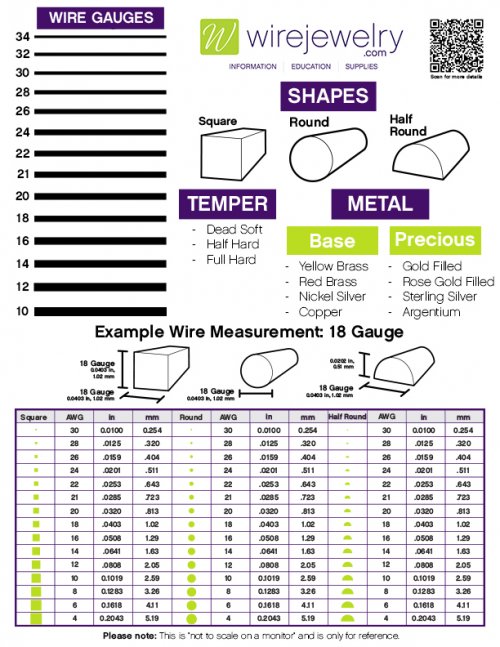 What Gauge of Wire Should I Use to Make Jewelry
What Gauge of Wire Should I Use to Make Jewelry What's a Cubic Zirconia Stone
What's a Cubic Zirconia Stone Rockhounding - A Beginner's Guide
Rockhounding - A Beginner's Guide What Shape of Wire Should I Use to Make Jewelry
What Shape of Wire Should I Use to Make Jewelry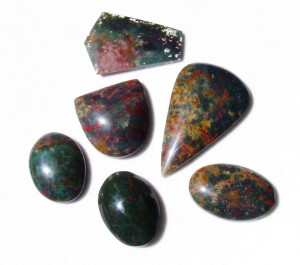 Gem Profile- Bloodstone
Gem Profile- Bloodstone Gem Profile- Picture Jasper
Gem Profile- Picture Jasper Gem Profile- Patterned Jaspers
Gem Profile- Patterned Jaspers Gem Profile- What is Jasper
Gem Profile- What is Jasper Gem Profile- Quartz Introduction
Gem Profile- Quartz Introduction Gem Profile- Wishful Turquoise
Gem Profile- Wishful Turquoise Gem Profile- Amethyst
Gem Profile- Amethyst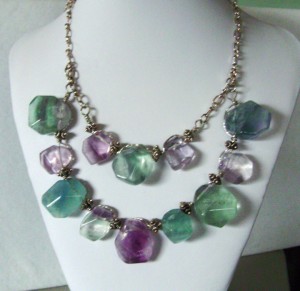 Gem Profile- Fluorite
Gem Profile- Fluorite Gem Profile- Obsidian
Gem Profile- Obsidian Gem Profile- Rose Quartz
Gem Profile- Rose Quartz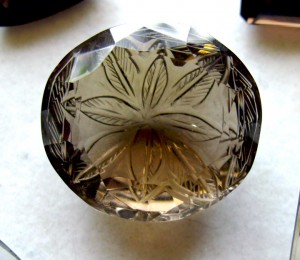 Gem Profile- Smoky Quartz
Gem Profile- Smoky Quartz Gem Profile- Citrine and Ametrine
Gem Profile- Citrine and Ametrine Gem Profile- Labradorite
Gem Profile- Labradorite Gem Profile- Rhodochrosite
Gem Profile- Rhodochrosite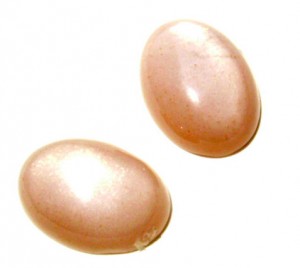 Gem Profile- Moonstone
Gem Profile- Moonstone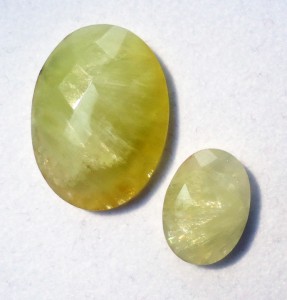 Gem Profile- Prehnite
Gem Profile- Prehnite Gem Profile- Jade
Gem Profile- Jade Gem Profile- Amazonite
Gem Profile- Amazonite Gem Profile- Corundum
Gem Profile- Corundum Gem Profile- Quartz with Inclusions Part 1
Gem Profile- Quartz with Inclusions Part 1 Gem Profile- Quartz with Inclusions Part 2
Gem Profile- Quartz with Inclusions Part 2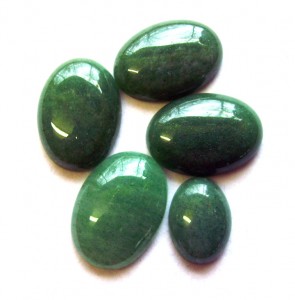 Gem Profile- Aventurine
Gem Profile- Aventurine Gem Profile- Macrocrystalline Quartz
Gem Profile- Macrocrystalline Quartz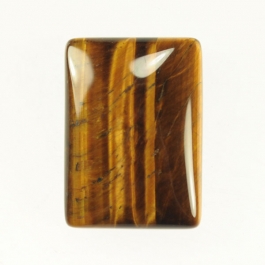 Gem Profile- Tiger Eye
Gem Profile- Tiger Eye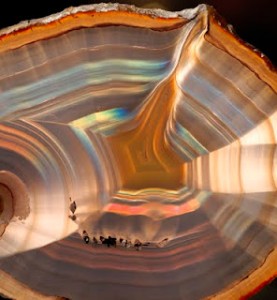 Gem Profile- Fire Agate and Iris Agate
Gem Profile- Fire Agate and Iris Agate Gem Profile- Amber
Gem Profile- Amber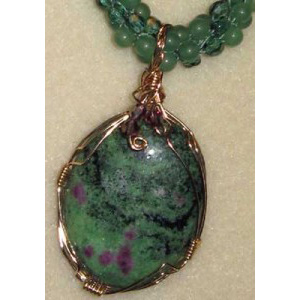 Gem Profile- Ruby Zoisite
Gem Profile- Ruby Zoisite Gem Profile- Ruby Fuchsite
Gem Profile- Ruby Fuchsite Gem Profile- Charoite
Gem Profile- Charoite Gem Profile- Moldavite
Gem Profile- Moldavite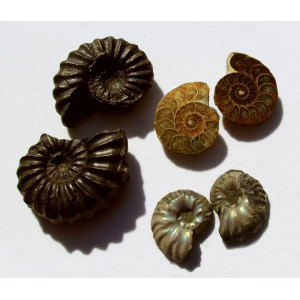 Gem Profile- Ammolite
Gem Profile- Ammolite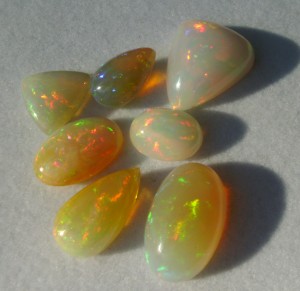 Gem Profile- White Precious Opal
Gem Profile- White Precious Opal Gem Profile- Opalized Fossils
Gem Profile- Opalized Fossils Gem Profile- Boulder Opal
Gem Profile- Boulder Opal Gem Profile- Black Precious Opal
Gem Profile- Black Precious Opal Gem Profile- Pyrite
Gem Profile- Pyrite Gem Profile- Opal Introduction
Gem Profile- Opal Introduction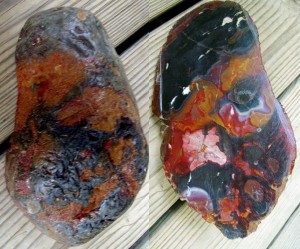 Gem Profile- Beautifully Colored Jasper
Gem Profile- Beautifully Colored Jasper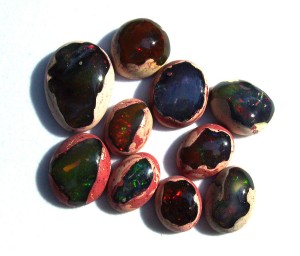 Gem Profile- Common Opal
Gem Profile- Common Opal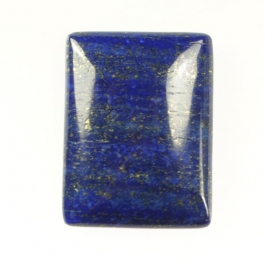 Gem Profile- Lapis Lazuli
Gem Profile- Lapis Lazuli Wire Sculpture Expert Dale -Cougar- Armstrong Interview
Wire Sculpture Expert Dale -Cougar- Armstrong Interview
